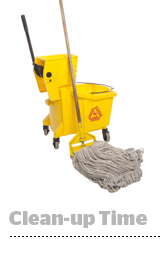 The rise of programmatic buying has been a boon for some unscrupulous publishers that have learned to game the system by unloading junk ad impressions on exchanges. Now the money grab may be ending as exchange operators respond to improvements in fraud detection and to buyer demands for legit inventory.
The rise of programmatic buying has been a boon for some unscrupulous publishers that have learned to game the system by unloading junk ad impressions on exchanges. Now the money grab may be ending as exchange operators respond to improvements in fraud detection and to buyer demands for legit inventory.
At least one such player, OpenX, is taking some steps to clean up its marketplace. The company has introduced manual review of all new publishers coming onto its exchange and automated the filtering of suspect placements in real time. Previously it did not filter out individual impressions; all decisions were made at the publisher level.
Additionally, the company has pledged to ban whole classes of publishers that routinely flout its OpenX Market policies – even when those publishers have some legitimate audience. For instance, “phantom publishers” such as those run by Alphabird and DigiMogul, linked earlier this year to a massive surge in botnet traffic, will not be welcome.
“We know that there’s a class of publisher out there that is nefarious,” said Qasim Saifee, SVP for monetization platform at OpenX. “We’ll accept no Alphabird or DigiMogul at all – we don’t think that stuff is salvageable.”
Talk is one thing, but will OpenX deliver? Some buy-side sources say it already has.
“They are without a doubt our most improved supply-side partner and honestly the only one that’s made significant strides in terms of the drop in percentage of suspicious traffic,” said Alec Greenberg, VP media operations for Media6degrees. “They definitely still have room to improve, but they have made it very clear that they are taking this seriously and, to be honest, we’ve been pretty proud of them.”
OpenX now has 10 people focused on publisher quality and vetting new sites – modest compared to the hundreds of quality monitors Google employs. It rejects more than 30% of sites submitted to its exchange, according to John Murphy, VP marketplace quality. That’s up from about 15% last summer.
Other policies that are new – or newly enforced – include bans on pages that support piracy, host unmoderated user-generated content, contain more than four ads or contain ads not viewable by design (e.g. by generating ad calls below the fold or in hidden iframes).
“We don’t let them in the front door if they don’t meet our supply policies,” Murphy said.
OpenX’s traffic-quality issues surfaced in the press about a year ago, when it was identified as one of the preferred sales channels for Sambreel, which used a network of browser plug-ins to inject ads onto Web pages it didn’t own. At the time, OpenX, along with PubMatic and Rubicon Project, were used to move tens of billions of impressions per month over the late summer and early fall 2012, according to AdExhanger sources.
Six months later the company, along with other supply-side platforms, was linked to sites run by Alphabird, DigiMogul and other recipients of botnet traffic.
So why did OpenX Market fall prey to these inventory issues in the first place? Part of the answer, seemingly, is that it pays to look the other way. But executives also say part of the quality problem is a legacy issue, dating back to its roots as an open-source ad server 10 to 15 years ago.
“Many buyers aren’t able to discern the distinction between the inventory they happen to buy from the exchange versus publishers that were using our ad-serving product,” according to Saifee. “To the extent that we didn’t make that distinction clear, that ended up hurting us.”
Saifee and Murphy, the two men most directly responsible for OpenX’s quality drive, both hail from Yahoo. They note that the challenge posed by search fraud was an easier problem. “We’re a degree more removed from the advertiser,” he said. “We don’t have access to as much information on conversion data.”
They say it was around February 2012 that OpenX began receiving consistent complaints from its buyers about publisher quality. It took approximately another year to marshal the internal resources and management will power to tackle those complaints head-on.
“We are consciously taking a revenue hit,” said Saifee. “But it’s worth it because it enhances the reputation of our market in the minds of the buyers. We believe that over time we’ll be able to secure more inventory for them in a virtuous cycle.”
OpenX’s traffic-quality monitoring system is a work in progress. The company plans to progressively roll out more oversight and quality improvements. “As the system detects patterns, we’ll enhance the ability to filter out traffic,” Murphy said.
Dan Schwartz, COO at Run DSP, hasn’t yet seen the same level of improvement that Media6degrees has, but he expects to, based on OpenX’s outreach.
“We’re excited about some of the collaborative work we’re now doing together,” he said. “It’s more of an expectation regarding steps they’re now taking, which we believe to be a direct result of feedback we, and presumably others, have shared and the conversations and actions that sparked.”














